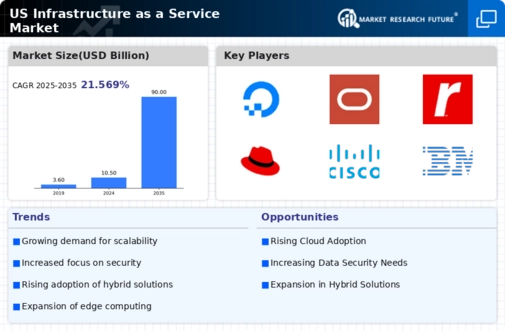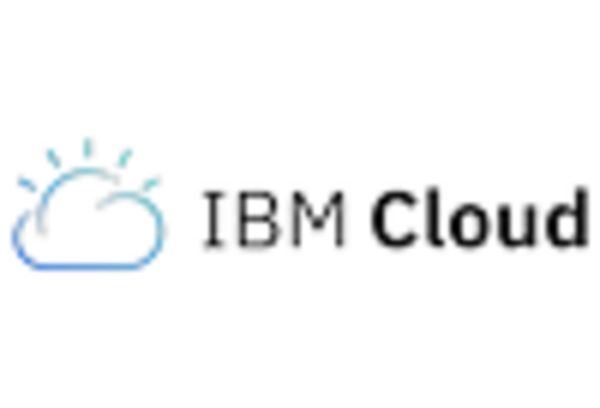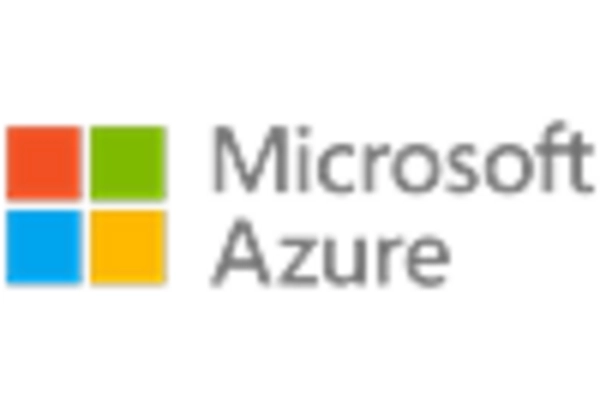Growing Demand for Scalability
The infrastructure as-a-service market experiences a notable surge in demand for scalability, driven by businesses seeking to adapt to fluctuating workloads. Organizations increasingly recognize the necessity of flexible infrastructure that can expand or contract based on their operational needs. This trend is particularly pronounced among small to medium-sized enterprises (SMEs) that may lack the resources for extensive on-premises infrastructure. According to recent data, the scalability feature is a primary consideration for approximately 70% of companies when selecting an IaaS provider. This growing demand for scalability not only enhances operational efficiency but also positions the infrastructure as-a-service market as a critical component in the digital transformation journey of many organizations.
Cost Efficiency and Budget Management
Cost efficiency remains a pivotal driver in the infrastructure as-a-service market, as organizations strive to optimize their IT expenditures. By leveraging IaaS solutions, companies can significantly reduce capital expenses associated with hardware procurement and maintenance. A recent analysis indicates that businesses can save up to 30% on IT costs by transitioning to an IaaS model. This financial advantage is particularly appealing to startups and enterprises looking to allocate resources more effectively. Furthermore, the pay-as-you-go pricing model inherent in IaaS allows organizations to manage their budgets more effectively, ensuring that they only pay for the resources they utilize. This financial flexibility is likely to continue driving growth in the infrastructure as-a-service market.
Increased Focus on Disaster Recovery Solutions
The infrastructure as-a-service market is witnessing an increased focus on disaster recovery solutions, as organizations prioritize business continuity in the face of potential disruptions. The ability to quickly recover data and applications in the event of a disaster is becoming a critical requirement for many businesses. Recent statistics suggest that nearly 60% of organizations consider disaster recovery capabilities as a key factor when selecting an IaaS provider. This heightened awareness of the importance of disaster recovery is likely to propel the infrastructure as-a-service market forward, as companies seek reliable solutions that ensure minimal downtime and data loss.
Enhanced Collaboration and Remote Work Capabilities
The infrastructure as-a-service market is benefiting from the enhanced collaboration and remote work capabilities that IaaS solutions provide. As organizations continue to embrace remote work models, the need for reliable and accessible infrastructure becomes paramount. IaaS platforms facilitate seamless collaboration among distributed teams by offering scalable resources that can be accessed from anywhere. Recent surveys indicate that approximately 75% of companies prioritize cloud-based solutions to support their remote work initiatives. This shift towards remote work is likely to sustain growth in the infrastructure as-a-service market, as businesses seek to maintain productivity and collaboration in an increasingly digital landscape.
Rising Adoption of Artificial Intelligence and Machine Learning
The integration of artificial intelligence (AI) and machine learning (ML) technologies is emerging as a significant driver in the infrastructure as-a-service market. Organizations are increasingly leveraging IaaS platforms to deploy AI and ML applications, which require substantial computational power and storage capabilities. Recent data indicates that the demand for AI-driven solutions is expected to grow by over 40% in the coming years, prompting businesses to seek scalable and flexible infrastructure. This trend not only enhances operational efficiency but also positions the infrastructure as-a-service market as a vital enabler of innovation in various sectors, including healthcare, finance, and retail.

















Leave a Comment